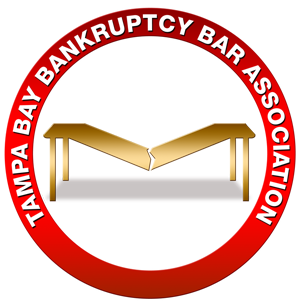By Henris Zaimaj & Ronald Espinal, Candidates for Juris Doctor, Stetson University College of Law
What happens when a creditor, based on a prepetition arbitration agreement with the debtor, files a motion to compel arbitration of a debtor’s claim for willful violation of the automatic stay? Will the dispute get decided by a bankruptcy judge
or by an arbiter?
The Federal Arbitration Act (“FAA”) was created by Congress as a response to judicial hostility against arbitration agreements. In enacting the FAA, Congress created a federal mandate that was strongly in favor of arbitration. However, prior to the Supreme Court’s decision in Epic1, the legal precedent provided a potential safe harbor for a bankruptcy judge to retain jurisdiction of the matter. Post Epic the integrity of this potential safe harbor is uncertain. Proponents of arbitration argue that Epic all but eradicated that safe harbor under certain circumstances, while the opposing side holds steadfast to pre-Epic case law and the importance of the stay to bankruptcy.
Argument Against Arbitration
Prior to Epic, bankruptcy courts followed the precedent established in McMahon to determine if the FAA’s mandate was incompatible with another federal statute. McMahon provided three avenues to determine if another federal statute displaces the FAA’s mandate: (1) statutory text, (2) legislative history, and (3) if there is an inherent conflict between the FAA and the other federal statute. The bankruptcy courts that have looked at whether the stay displaces the FAA’s mandate have stated that neither the text nor legislative history of the bankruptcy code are helpful to the analysis. Consequently, they have focused on the inherent conflict prong of the McMahon analysis. While finding an inherent conflict is a high bar, it is not insurmountable.
Generally, courts applying the McMahon test have done so in a two-part analysis. Courts first look to see if a bankruptcy judge has discretion to reject the FAA’s mandate based on whether the claim is core and derivative of the Code. If the claim is both core and derivative of the Code a bankruptcy judge must then consider whether compelling arbitration would undermine the policy goals of bankruptcy.
In the context of the stay, one of the factors that greatly leans towards showing an inherent conflict is if the bankruptcy is ongoing and the stay is in force. This is because the stay is designed to protect not only the debtor but also creditors; when a bankruptcy is ongoing the protections provided by the stay are at their highest. Accordingly, claims for a violation of the stay cannot be arbitrated because the rights of other creditors are at risk and cannot be vindicated in a two-party arbitral forum. Thus, these courts have held that the policy goals of bankruptcy are harmed because an arbiter cannot protect the interests of other creditors in arbitration. Another interesting approach is that under 11 U.S.C. § 1109 any party in interest to the bankruptcy has a right to be heard on any issue under the code.
Argument in Favor of Arbitration
The Supreme Court has stated that, upon a finding of a valid arbitration agreement between the parties, the FAA mandates district courts to send the parties to arbitration. Moreover, the FAA requires district courts to compel arbitration even when doing so could result in piecemeal litigation. The FAA’s mandate permeates to bankruptcy courts since their jurisdiction is a function of the district court’s reference.
In light of this Congressional mandate, the party refusing arbitration of a claim for willful violation of the stay bears the burden of showing that 11 U.S.C. § 362 of the code displaces the FAA. Epic arguably raised the burden higher than what it already was under McMahon. While under McMahon a showing of an inherent conflict between the FAA and another federal statute such as § 362 was sufficient to reject arbitration, under Epic, the party refusing arbitration must show that conflict is irreconcilable. Although the stay is undoubtedly a cornerstone of bankruptcy, it is nonetheless, simply a self-executing injunction arising by operation of a federal statute. An arbiter deciding a claim for violation of the stay is tasked with interpreting a federal statute. For over fifty years, the Supreme Court has consistently seen arbitration as a presumptively appropriate and competent approach to federal statutory interpretation3. In fact, the presumption that an arbiter has the competency to handle the most factually and legally complex cases is unassailable.
Given that an arbiter is presumed competent to render a decision on a claim for violation of the stay, theoretically, whether the claim is decided by an arbiter or by a bankruptcy judge, the two should reach the same conclusion. Both individuals would run the same legal analysis looking at three elements: (1) whether a party’s actions constitute violation of the stay, (2) whether that party knew the stay was in effect, and (3) whether that party—who’s actions were determined to violate the stay—intended to violate the stay. Thus, the legal analysis does not involve considering the impact of the decision on other parties, such as other creditors. Legally speaking, a claim for violation of the stay is a two-party dispute (debtor versus a creditor). If factually speaking the case is also a two-party dispute, then there can hardly be a conflict that rises to the level of irreconcilable.
Conclusion
It is unclear to what extent if any the Epic decision has abrogated the McMahon precedent and its progeny. However, the few bankruptcy courts that have faced this issue post Epic have not clearly drawn a substantive distinction between an “inherent” as opposed to “irreconcilable” conflict.4 Instead, most have continued to apply the McMahon test providing that Epic merely reinforced the idea that the party opposing arbitration bears a heavy burden to override the FAA’s mandate.
